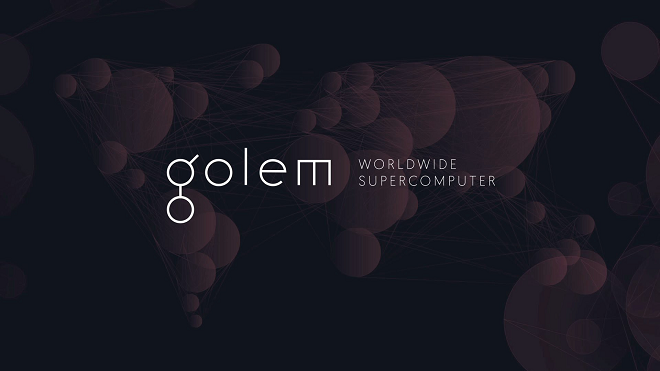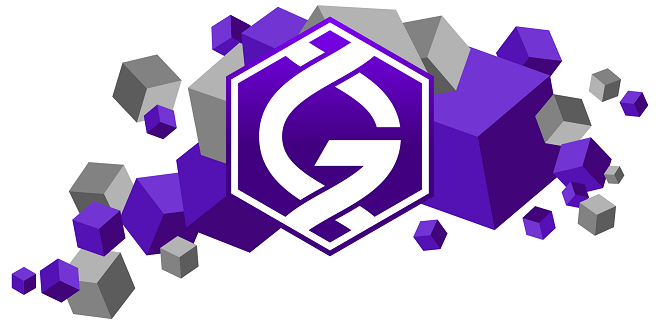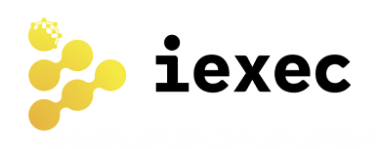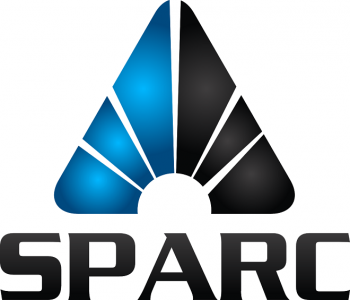2017 was a breakthrough year for cryptocurrency, as it attracted the attention of the common person on an unprecedented scale. The impact of cryptocurrency has gone beyond the confines of developed countries, seeping into in the very countries its properties will best benefit.
In 2014, two thirds of Africa’s Sub-Saharan population was unbanked; similar disquieting statistics represent the Southeast Asian region. Both of these areas are now successfully working with cryptocurrencies. It can be argued, then, that cryptocurrency has broken into the mainstream. However, the really exciting bit is yet to come.
Blockchain’s greatest strength is its versatility. Platforms can be designed to creatively solve an endless list of problems because of blockchain’s immutability, programmability, and autonomous nature.
A simple way of viewing this is that a problem can be solved between two users, on a network fueled by the cryptocurrency token, without being outsourced to a third party. These peer-to-peer solutions can be applied to all sorts of situations where central authority and impractical traditional systems function, to the loss of the average person. One of these areas we’re seeing blockchain affect is computing power.
The role of blockchain in computing power goes well beyond simply allowing users to draw resources from their peers across the world. Some groups are focused on uniting peers on a distributed computing platform for the cause of scientific research. This has been achieved before, with SETI’s analysis of signals being the most well known of its kind, convincing millions of users to devote idle computing power to help analyze signals from space. The possibility of accessing computer users worldwide and enlisting them to help solve scientific problems has enormous potential.
That is only one of the many reasons why we need more computing power.
The Growing Need for Computing Power
Computing power is the basis for all modern human activity. It is an essential utility that operates in our homes, at work, in education, and in day-to-day life. Science, stock markets, news media, entertainment, and social interaction have all been transformed by computers – computers have already bested humans in many areas, and they are steadily learning to do more.
Increasingly, our problems are being modeled for analysis with the help of big data. If the variables and conditions are understood, any problem can be stated mathematically. The earliest computers did nothing more than calculate basic arithmetic; they were so primitive that they took up large rooms and weighed many tons. Contrast that with today’s smartwatches, minute in size but infinitely more powerful.
The computers we use today are suitable for everyday use, and have followed Moore’s Law remarkably well, but computational ability is reaching a ceiling, and there remain many unsolved problems.
Today’s computers will curtail commercial ability to carry out computational tasks without access to heavier computing resources. Unfortunately, access to powerful computers has always been under the purview of governments or the richest of technology companies – unfair and undemocratic, given the potential influence of computational ability.
With the cloud computing market dominated by a select few entities like Microsoft, Amazon, and Google, it takes power away from an enormous portion of the world’s population, who then become dependent on these companies to carry out tasks that in the future may demand cloud computing. It is likely that purchasing the services of these companies will be relatively expensive, with conditions that are disproportionately in favor of the companies themselves.
Without even distribution of money, we cannot have equality. Without equality, we cannot have a democratic world. This applies to any resource or necessity that gives the supplying party power through monopoly, whether it be water, money, connectivity, or computational ability.
Cloud computing and distributed computing are two distinct fields, with the former being a subset of the latter. Cloud computing can be considered to be a logistics platform data, where data is sent to the cloud for processing, after which the output is delivered to end user. The performance, scaling, and maintenance of data and hardware resources is handled by the provider, easing the burden of the end user.
A full-scale transition to cloud computing/distributed systems has finally become a viable option; indeed, much of our lives is already conducted on the cloud. We back up our data on file-storage services, use online productivity tools, and stream entertainment. The shift will accelerate in the years to come.
Even You Can Supercompute with Blockchain Technology
Cloud computing provides users with processing power, storage, and other resources to help them execute their tasks. As we mentioned, the tasks themselves have become increasingly demanding.
To solve these problems, businesses and labs have turned to cloud-computing providers for the resources they needed. There are two issues with this: it still leaves the average individual out, and the centralized locations where the resources are held are still subject to failure.
Blockchain offers solutions to both those issues. It can leverage the power of computers across the world, tied together by a blockchain network, and distribute the task’s workload among each computer.
Any user on the network can rent – by paying with tokens – the computing power of another user or data center anywhere in the world to help solve a problem, from image rendering to machine-learning tests. Those who offer computing resources are rewarded in return. Problems that usually takes days or weeks can be solved in minutes or hours.
To gain some perspective on the extent to which blockchain could disrupt cloud computing, compare Siacoin, the decentralized data storage platform, and Amazon’s Web Services. The former charges users $2.41 to store 1 terabyte of data every month, while the latter charges $30. That’s nearly 15 times as much. What one pays in a year with blockchain technology, one pays roughly every month with centralized resource providers.
The cloud computing market is expected to be worth $411 billion by 2020, with an annual growth rate of 19%. The market for extra resources on demand is now practically feasible. Couple this burgeoning market with the possibilities for blockchain to reduce costs and reward users for their contribution, and we have a use case of logical and commercial value.
This opportunity has been recognized by several teams and spurred them on to develop blockchain-based distributed computing projects. Here we take a look at 5 of the most interesting ones on the market currently.
1. Golem.Network

Headquartered in Poland, the Golem Network is run by a predominantly Polish team who took inspiration from Jewish folklore to design their currency’s brand. The Golem is a mythical creature that was created from inanimate matter to form a being of limitless power and potential – an ambitious symbol for the ambitious goal the company is setting out to achieve.
Built on the Ethereum blockchain, Golem has several goals in its framework, the first of which is to create a decentralized global computing marketplace. This will be supported by an application and transaction registry, which will let users distribute software and earn revenue from it. Another more ambitious goal is to help build the next generation of the web, often called “Web 3.0,” a decentralized and self-organizing network.
The platform will allow users to rent out idle computing resources like storage, processing power, and bandwidth to other users on the network, for which they will get paid in GNT. There are 3 stakeholders on this platform: providers, users, and software developers. Both individual users and large data centers can act as providers and rent out their resources. The application registry, essentially a marketplace for apps, will be the portal where developers can monetize their work.
The particular use cases that Golem is focusing on is CGI rendering, mathematical calculation, DNA analysis, medicine, and machine learning. Golem’s network has already been successfully used to render CGI, an intensive process that every supercomputing project has as a use case.
Coin Information (as of February 28, 2018):
- Market cap: $300 million
- Peak market cap: $965 million (Early January 2018)
- Current coin value: $0.359
- Peak coin value: $1.16
- Total coin supply: 1 billion
- Circulating coin supply: 834 million
- Popular exchanges: Bitfinex, Huobi, Bittrex, and Poloniex
Strengths:
- Aims to build the Web 3.0, working on the fundamental technologies required for the shift
- Has already been used to render CGI
- Very transparent and detailed roadmap
- Strong incentives to participate on the platform, including a comprehensive marketplace
2. SONM

The Supercomputer Organized by Network Mining (SONM) is a cloud-computing project that uses a special kind of technique called “fog computing” to more efficiently conduct computation. Their ICO was launched in July 2017.
One of SONM’s goals is to replace the hash-based cryptocurrency mining with decentralized fog computing. For a closer look at fog computing and the SONM project, read this article.
However, like Golem and the others on the list, i64ts main goal is to create a computing power marketplace for individuals across the world. The supporting elements of their platform are a docker container for parallel computing, BtSync (secure P2P file transfer), and Whisper (P2P node communication).
SONM’s platform has two stakeholders: miners and buyers. Miners are simply those who offer computational resources, which can be a desktop or a mobile device (including gaming devices, such as PlayStations), and earn tokens for successful calculations that have used their resources. Buyers are those who request these resources.
The use cases that SONM is concentrating on are scientific research, machine learning, video rendering, streaming, game servers, site hosting, and more. Given that the service offered is generally the same among all supercomputing coins, the use cases are the same as well. All that should be noted is that any task requiring heavy computation can be executed on a distributed computing network.
Golem and SONM have made the most headway in this niche, with SONM some distance away. That is by no means a decider in which project will become the dominant blockchain computing platform, but from an investment point of view, it would be worth noting that Golem has a headstart.
Coin Information (as of February 28, 2018):
- Market cap: $81 million
- Peak market cap: $253 million (Early January 2018)
- Current coin value: $0.226
- Peak coin value: $0.70
- Total coin supply: 444 million
- Circulating coin supply: 359 million
- Popular exchanges: Binance and Tidex
Strengths:
- Has joined the OpenFog Consortium, which includes Microsoft, Intel, Dell, and Princeton University
- Fantastic whitepaper
- Fog computing is a genuinely lucrative technique
- Machine-learning algorithms are currently testable on SONM
3. GridCoin

GridCoin is an open-source distributed computing project built atop the BOINC platform. The BOINC platform was a grid computing system created by Berkeley which, among other projects, helped decode signals that SETI gathered with its radio telescopes. This project focuses largely on scientific research aided by volunteers from across the globe.
The incentive for this project is more philanthropic than monetary. For your contributions in providing computer power to the network, you earn GRC tokens. It operates on a consensus algorithm called “Proof-of-Research,” which rewards users based on the amount of useful research conducted. It is also very coin-efficient and preserves the electricity that would have otherwise been used on hashing numbers.
The list of projects that GridCoin users can contribute computing power to is substantial, covering astronomy, biology, mathematics, physics, and more. It includes solving protein structures, medical drug discovery, and studying signals from space. It is possible for users to hop onto the network and contribute to research right now.
Coin Information (as of February 28, 2018):
- Market cap: $26 million
- Peak market cap: $78 million (Early January 2018)
- Current coin value: $0.069
- Peak coin value: $0.20
- Circulating coin supply: 390 million
- Popular exchanges: Bittrex and Poloniex
Strengths:
- Heavy focus on scientific research
- Resource-conscious consensus algorithm, Proof-of-Research
- Users can contribute to good causes and earn tokens for it
- Established set of meaningful projects
4. iExec

iExec, built on the Ethereum blockchain, wants to build the first marketplace for cloud-computing resources. Of course, it will have to battle with some of the other coins on this list, who are also vying for the same.
There are 3 stakeholders on the platform: providers, developers, and investors. Providers offer their idle computing resources to the platform, which developers can use to run their applications. Providers can apply to be application, data, or server providers. iExec also provides developers with a Software Development Kit (SDK) and smart contracts. Investors earn by holding or trading their tokens.
The use cases that are being focused on are scientific research, cryptography, 3D rendering, finance, and fog computing. The platform will also support AI frameworks like TensorFlow, Theano, and Caffe.
iExec has already partnered with Enterprise Ethereum Alliance, the Chinese Academy of Sciences, Genesis Mining, Coin Telegraph, and others.
Coin Information (as of February 28, 2018):
- Market cap: $127 million
- Peak market cap: $353 million (Early January 2018)
- Current coin value: $1.62
- Peak coin value: $4.47
- Total coin supply: 87 million
- Circulating coin supply: 79 million
- Popular exchanges: Binance and Bittrex
Strengths:
- Partnerships with notable companies and projects
- Developer friendly, with SDKs and smart contracts tools
- The dapp store is already live, and includes their partner Request Network
- Consistent communication from the team
5. SPARC

Science Power and Research Coins (SPARC), like GridCoin, focuses on creating a distributed supercomputer for scientific research.
The SPARC Protocol lets JSON and Javascript-based computation packages be transmitted on the distributed network.
The platform does have a feature that distinguishes it from GridCoin. It has created SPARC Math, SPARC Physics, and SPARC Shaders to aid scientific study on the platform, and it supports the SPARC Protocol.
The first is a mathematical library, developed in Javascript, that can run in a browser. The second is a physics engine that permits simulations and physics-based video games in the browser. The last provides shaders for calculation and rendering of floating-point math and physics simulations, which requires GPUs.
The project’s Distributed Computing Protocol has three major components: the miner, the host, and the board. The miner is the user who contributes computing power towards problem-solving. The host deploys the project onto the network. The board is an API that stores data associated with the miner, the host, and the computational tasks.
The specific use cases that the team has in mind include web traffic and content delivery, city infrastructure, and, of course, scientific research.
The public ICO will launch in the summer of 2018 and the team plans to release their proprietary Distributed Computing Protocol before the ICO. Currently, the alpha demo of the platform is available for testing.
Strengths:
- SPARC Protocol and its subordinate features are logical and effective features
- Physics based simulations have been successfully conducted
- Browser compatibility makes it convenient
- Websites can generate revenue through micro-computations instead of ads
Conclusion
Predicting the path of blockchain and cryptocurrency is a dangerous task, and can be foolish and downright dangerous for the market. There are a few use cases, however, that can be confidently predicted to succeed – and distributed computing is one of them. The logic, commercial value, and societal benefit of a distributed computing system is readily apparent, and any investor should consider apportioning some funds into this space.
Specific projects themselves may be difficult to shortlist, though Golem is by far the most well known and a safe bet. SONM is also a dark horse to keep an eye out for, as it has established enterprise partnerships and hit every development milestone so far.
The others are perhaps not in the best position to own the market, but it is still very early in the cryptocurrency market, let alone the niche of cloud computing.

